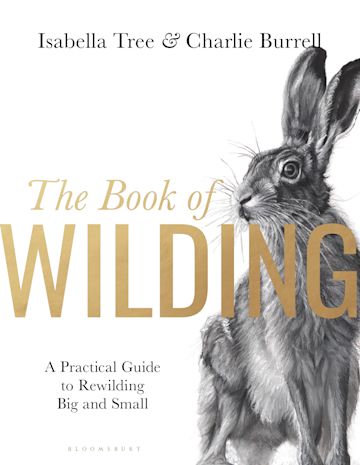
This is the bible for rewilders, and a solid tome it is too. The authors are, of course, the very best people in the UK to write such a book as they have ‘done it’ themselves at their estate of Knepp in Sussex. Knepp is a fantastic wildlife success story with rewilded habitats producing impressive wildlife dividends such as Turtle Doves, Purple Emperors and Nightingales.
And so if you want to do ‘a Knepp’ then this book is the manual for doing it on your own land ‘whether it’s thousands of hectares with the potential for free-roaming herbivores, or just a few hectares where you’ll be mimicking natural processes yourself’ as they say. There is masses of very practical information here on stocking rates on different soil types, with different mixtures of herbivores and on different sizes of estate. This, and much more information on woodland and hedge management and watercourses, will be like gold dust to anyone contemplating a rewilding project of their own, and there is an increasing number of such people and sites. Also, and importantly, the book provides plenty of enthusiasm which may well carry you through to giving it a go if you are trembling on the brink.
Not surprisingly, given the brilliance of Isabella’s earlier book about Knepp, Wilding (reviewed here, and this blog’s book of the year in 2018), the book is clearly and enthusiastically written. It’s an excellent read even if you aren’t planning to rewild your thousands of hectares.
The last two chapters are on what you can do in your garden and adding wildlife to towns and cities. These are interesting too, but few of us have gardens large enough really to recreate natural processes so we are at, appropriately enough, the conservation gardening end of things. I enjoyed being told to allow anthills and molehills to form – some chance! I found the line between wildlife-friendly gardens and rewilded gardens to be drawn in a different place from where I would draw it – is the Ivy growing all over the roof of our shed really rewilding because I thought it was simply wildlife-friendly (and lazy) gardening. In fact, I wouldn’t draw that line at all, there is surely more of a continuum in existence here and treating it as a dichotomy is possibly unhelpful. However, the thinking behind recreating natural processes, or restoring the ecology, is a valuable guiding principle for landowners at all scales. This book explains those principles well and I’m not sure you will find that done in many other places, and not nearly as well as it is here.
I’m a fan of rewilding (you’ll be able to check that out when my forthcoming book, Reflections, is published in less than two months time (see below)) but I don’t see rewilding as the one and only answer and way forward for wildlife conservation. I see it as part of the mix. It deserves to be a growing and increasingly important part of the mix and I hope and believe that this book can help that to happen. There are many tantalising artists’ impressions of how landscapes could look in future and these are most beguiling. But it will be a struggle to make them happen, and for them to happen there will have to be an investment of public money, as there was at Knepp.
Many will owe the authors a debt of great gratitude for laying out what they have learned in such a clear and inspiring way.
The cover? Not great, and choosing a non-native species is an interesting choice. I’d give it just a 6.
The Book of wilding: a practical guide to rewilding big and small by Isabella Tree and Charlie Burrell is published by Bloomsbury.
Buy direct from Blackwell’s – a proper bookshop (and I’ll get a little bit of money from them)
[registration_form]
But I love the hare as the image on the cover – exquisitely drawn and striking. And I like the fact that as a species it sits on the blurred line between native/non-native. It feels appropriate when talking about having to re-introduce species in order to rebalance a landscape.